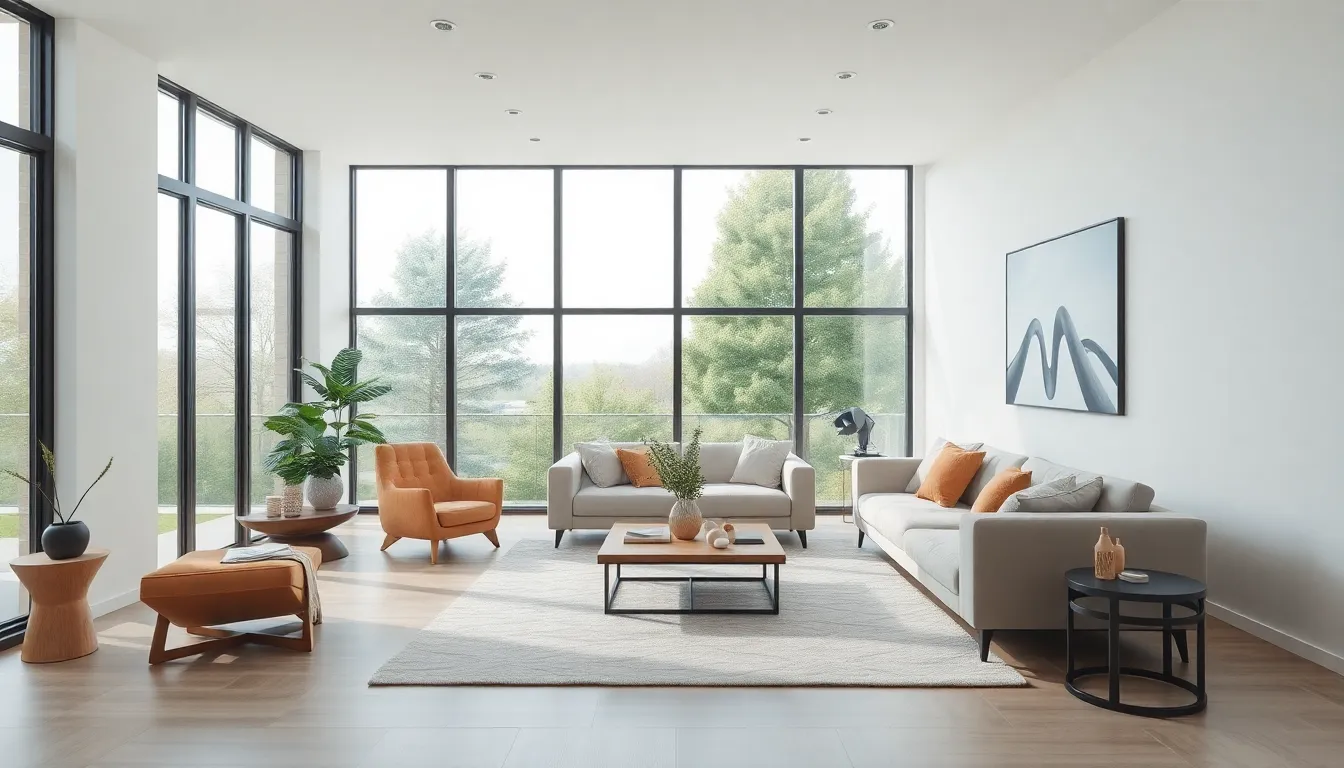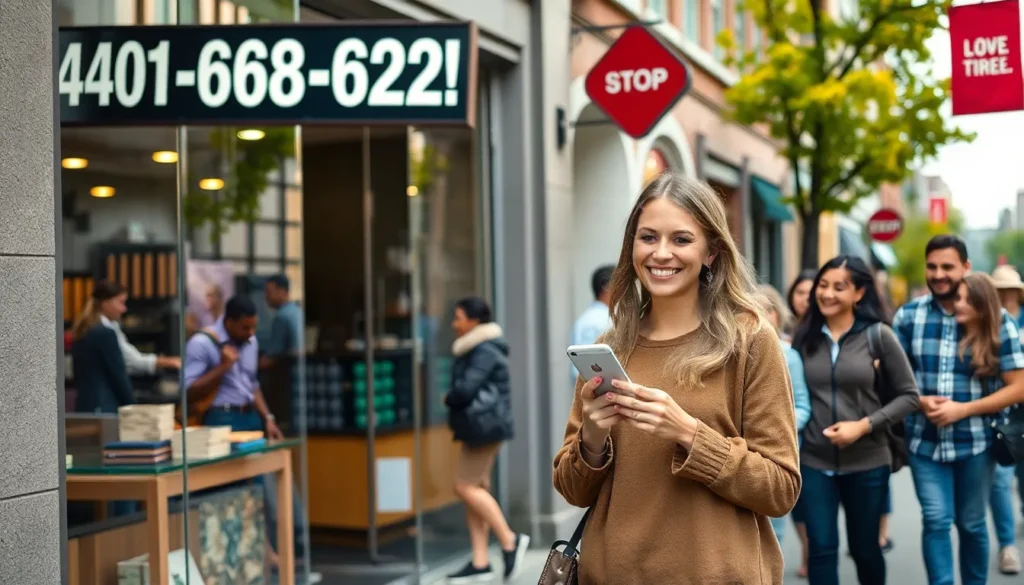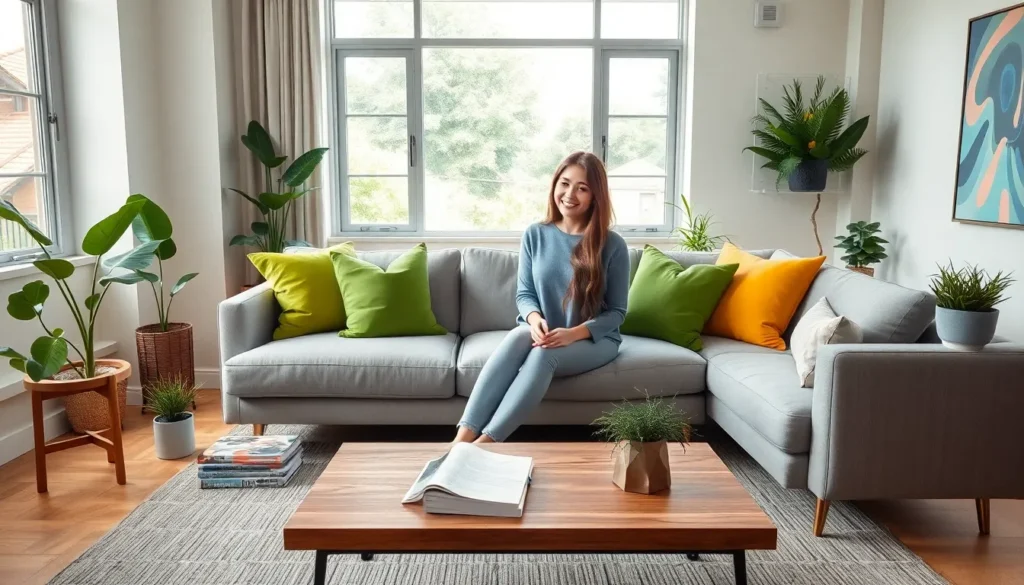Table of Contents
ToggleAs homeowners seek to create spaces that reflect their personalities and lifestyles, home trends continually evolve. From sustainable materials to smart technology, today’s design choices are all about blending functionality with aesthetic appeal. It’s not just about what looks good; it’s about creating a sanctuary that enhances daily living.
In 2023, several key trends are shaping the way people approach home design. Minimalism is making a comeback, focusing on simplicity and decluttering, while biophilic design brings nature indoors, promoting well-being. With these shifts, homeowners are not just updating their spaces; they’re embracing a lifestyle that prioritizes comfort, sustainability, and innovation.
Overview of Home Trends
Home design trends evolve to meet the changing preferences of homeowners, reflecting unique lifestyles and personalities. In 2023, key trends prioritize comfort, sustainability, and functionality while enhancing daily living experiences.
- Minimalism: The resurgence of minimalism focuses on simplicity and decluttering. Homeowners embrace clean lines and open spaces, promoting a serene atmosphere.
- Biophilic Design: Biophilic design integrates nature within indoor environments. This trend features natural materials, plants, and ample light to enhance well-being and connection to the outdoors.
- Sustainable Materials: Sustainable materials gain traction as homeowners seek eco-friendly options. Recycled materials, bamboo, and reclaimed wood reduce environmental impact while adding character and warmth.
- Smart Home Technology: Smart home technology enhances convenience and security. Features like automated lighting, temperature control, and smart locks offer efficient solutions for modern living.
- Multifunctional Spaces: Multifunctional spaces cater to the need for versatility. Homeowners design areas that serve multiple purposes, such as home offices that double as guest rooms.
- Bold Colors and Patterns: Bold colors and patterns bring vibrancy to interiors. Accent walls, patterned textiles, and colorful decor pieces create focal points and allow for personal expression.
- Vintage and Antique Elements: Vintage and antique elements add character to modern homes. Mixing old and new pieces creates a unique aesthetic while honoring craftsmanship and history.
- Outdoor Living Spaces: Outdoor living spaces extend usable areas and enhance lifestyle. Patios, decks, and gardens serve as relaxation zones, entertaining areas, and wellness retreats.
Overall, these trends reveal a dynamic shift in home design, where individuality meets functionality, creating spaces that resonate with personal comfort and lifestyle choices.
Popular Design Styles

Homeowners increasingly gravitate toward distinct design styles that resonate with their preferences and functional needs. Here are three prominent styles shaping modern interiors.
Modern Aesthetic
Modern aesthetic reflects clean lines, open spaces, and a neutral color palette. Features often include geometric shapes, metallic accents, and natural materials like wood and stone. Furniture tends to emphasize form while providing comfort. Popular modern elements include floor-to-ceiling windows, which maximize natural light, and sleek kitchen designs that combine utility with elegance. This style balances practicality with artistic expression, making it ideal for contemporary living.
Rustic Charm
Rustic charm embodies warmth and comfort through the use of natural textures and earthy tones. This style often incorporates reclaimed wood, stone walls, and vintage furnishings to create inviting spaces. Accessories may include handmade items, woven textiles, and a muted color palette that reflects nature. Open floor plans and cozy nooks enhance the overall atmosphere, inviting relaxation. Rustic charm fosters a connection to nature and a sense of tranquility, appealing to those seeking a homely feel.
Minimalist Living
Minimalist living centers on simplicity and functionality, encouraging a decluttered approach to design. This style features an absence of unnecessary items, focusing instead on essential furniture and decor. Predominant colors include whites, greys, and blacks, creating a calm atmosphere. Multifunctional spaces and innovative storage solutions are common, promoting efficient use of space. Minimalist living cultivates a serene environment that allows for personalization while prioritizing clarity and openness.
Sustainable Home Trends
Sustainable home trends focus on environmentally conscious choices that enhance comfort and aesthetic value. Homeowners prioritize eco-friendly materials and energy efficiency to create sustainable, stylish living spaces.
Eco-Friendly Materials
Homeowners increasingly choose eco-friendly materials to reduce environmental impact. Options such as reclaimed wood, bamboo, and recycled metal offer durability while minimizing waste. Biodegradable materials like cork and linoleum also gain popularity for their sustainability. Manufacturers focus on low-VOC (volatile organic compound) paints and finishes, contributing to healthier indoor air quality. Sustainable textiles, including organic cotton and hemp, provide an eco-conscious approach to home furnishings. Homeowners benefit from both aesthetic appeal and environmental responsibility through these selections.
Energy Efficiency
Energy efficiency remains a priority for modern homes. Homeowners invest in Energy Star-rated appliances that consume less energy and offer long-term savings. Smart thermostats and energy management systems optimize heating and cooling, enhancing comfort while reducing costs. Insulating windows and doors significantly reduce energy loss, making homes more efficient. Solar panels also gain traction, providing renewable energy sources and promoting self-sufficiency. These energy-efficient solutions align with homeowners’ goals of sustainability while improving the functionality and value of their living spaces.
Smart Home Innovations
Smart home innovations enhance convenience and security in modern living. Homeowners now incorporate advanced technologies to create seamless, efficient environments.
Home Automation
Home automation transforms homes into interconnected systems that streamline daily tasks. Smart devices, such as voice-activated assistants, smart thermostats, and automated lighting, enable homeowners to control various aspects of their living spaces remotely. For example, programmable thermostats adjust temperatures based on occupancy patterns, optimizing energy use. Smart lighting systems allow for customizable settings, enhancing ambiance and energy efficiency with LED bulbs. Connecting multiple devices through platforms like Google Home or Amazon Alexa facilitates easy management, contributing to a cohesive smart home experience.
Security Solutions
Smart security solutions provide enhanced safety for homeowners. Devices such as smart doorbells with video capabilities, motion-activated cameras, and smart locks offer real-time monitoring and control. For instance, smart locks allow homeowners to grant access to visitors remotely, eliminating the need for physical keys. Security cameras, accessible via smartphones, offer peace of mind by enabling users to monitor their properties from anywhere. Integrating alarm systems with mobile notifications informs homeowners of potential threats, creating a proactive approach to home security.
Color Trends for 2023
Color trends for 2023 showcase a mix of bold hues and neutral palettes, reflecting homeowners’ desires for vibrant yet calming environments in their spaces.
Bold Hues
Bold hues capture attention with their striking presence. Shades like deep emerald green, rich burgundy, and vibrant cobalt blue add personality to interiors. Designers recommend using these colors for accent walls, furniture pieces, or decorative accessories to create focal points in rooms. The trend encourages pairing bold shades with contrasting tones, enhancing visual appeal and depth in spaces. Experimentation in combining multiple bold colors introduces dynamism, balancing warmth and coolness to suit personal styles.
Neutral Palettes
Neutral palettes remain popular for their versatility and timelessness. Colors such as soft beige, warm taupe, and cool gray create serene backdrops that enhance natural light. These shades work well in minimalistic designs and provide an elegant foundation for layering other colors and textures. Homeowners often incorporate sustainable materials like natural wood and stone, which complement neutral tones beautifully. Further, accents of muted colors, such as pastel pinks or soft blues, can be introduced through textiles or art, allowing for subtle personalization in otherwise understated environments.
Home trends in 2023 reflect a significant shift towards personalization and sustainability. Homeowners are embracing designs that not only enhance functionality but also resonate with their unique lifestyles. The integration of nature and smart technology creates living spaces that are both inviting and efficient.
As trends evolve bold colors and multifunctional spaces are becoming essential in modern homes. The focus on eco-friendly materials and energy efficiency demonstrates a commitment to a healthier planet.
This dynamic landscape of home design encourages individuals to create environments that are not just stylish but also promote well-being and comfort. The future of home design is bright as it continues to blend innovation with personal expression.







